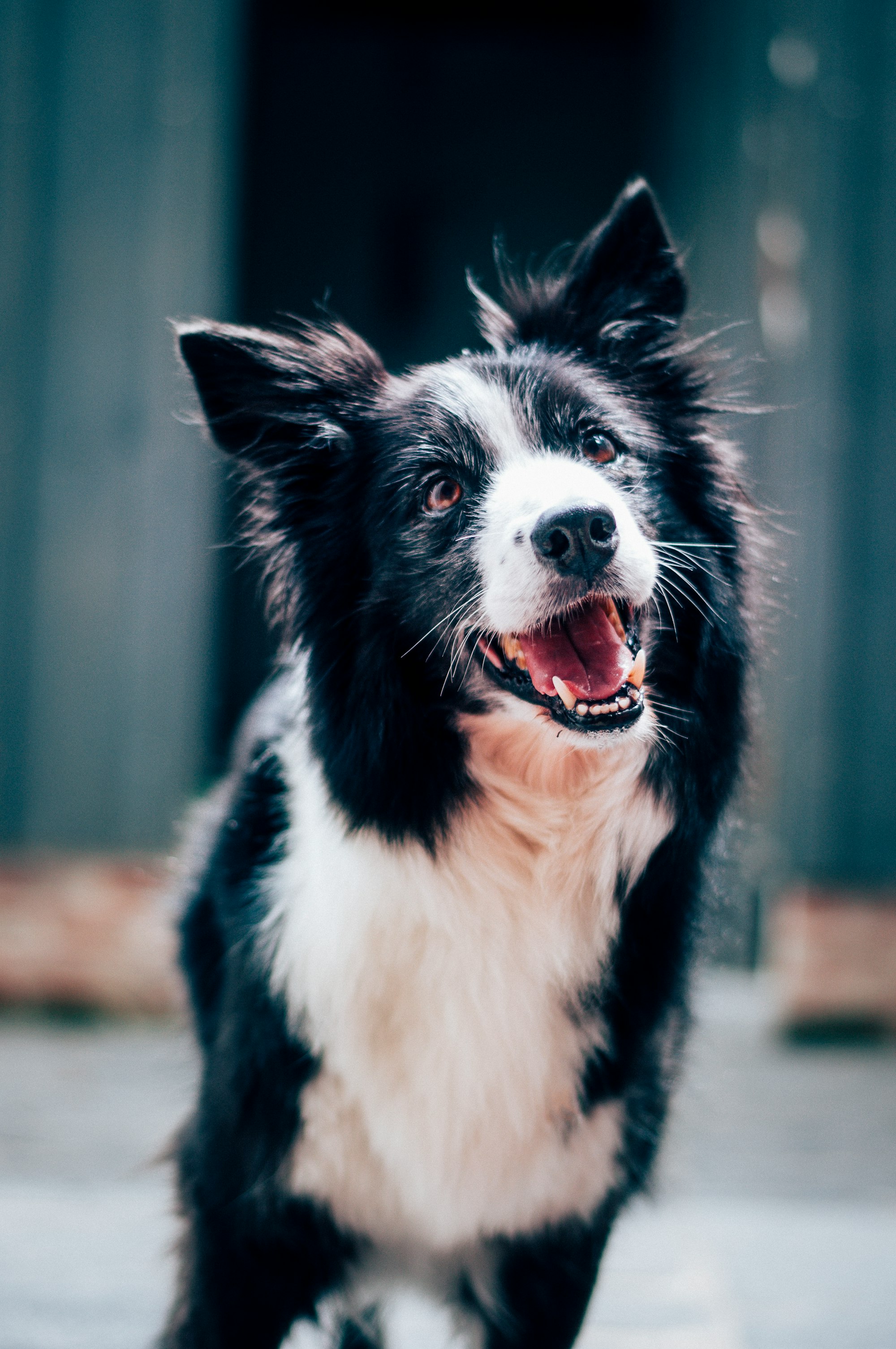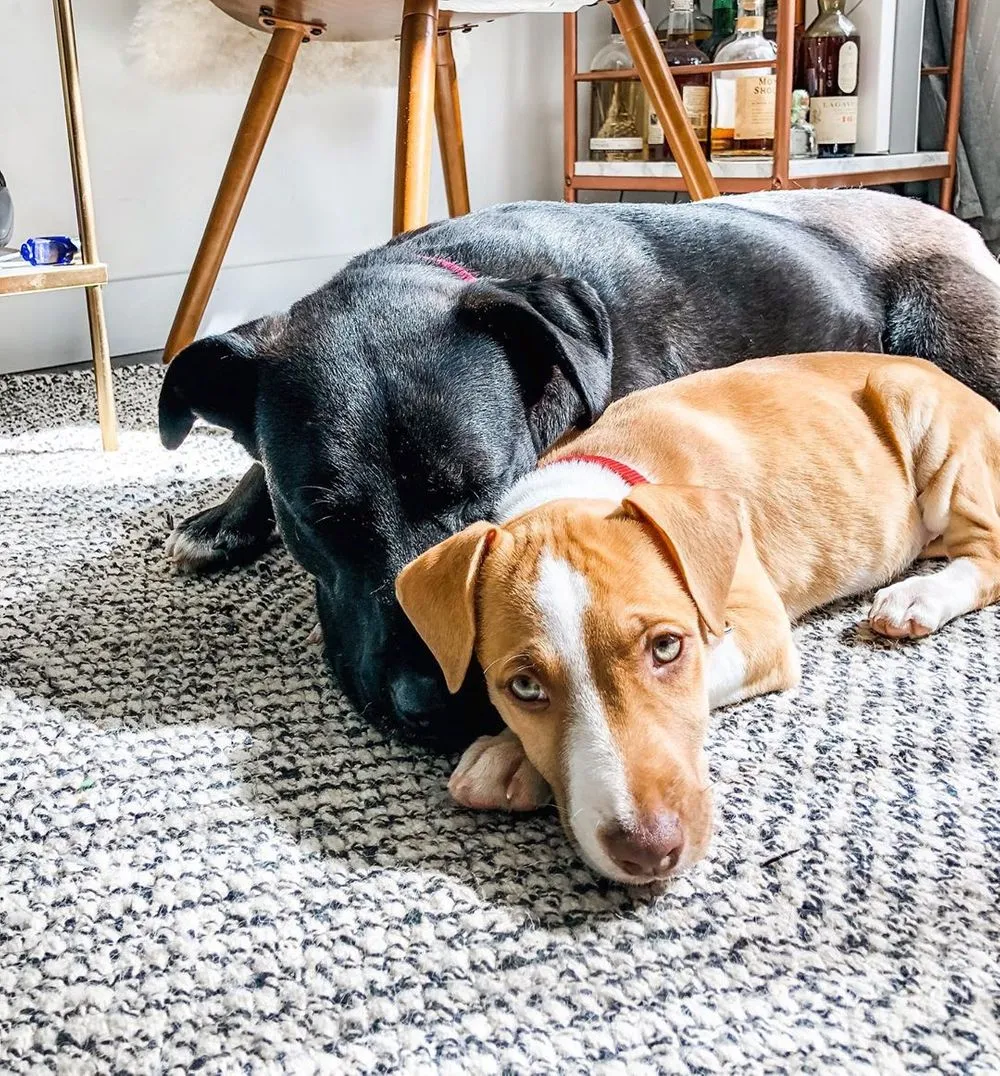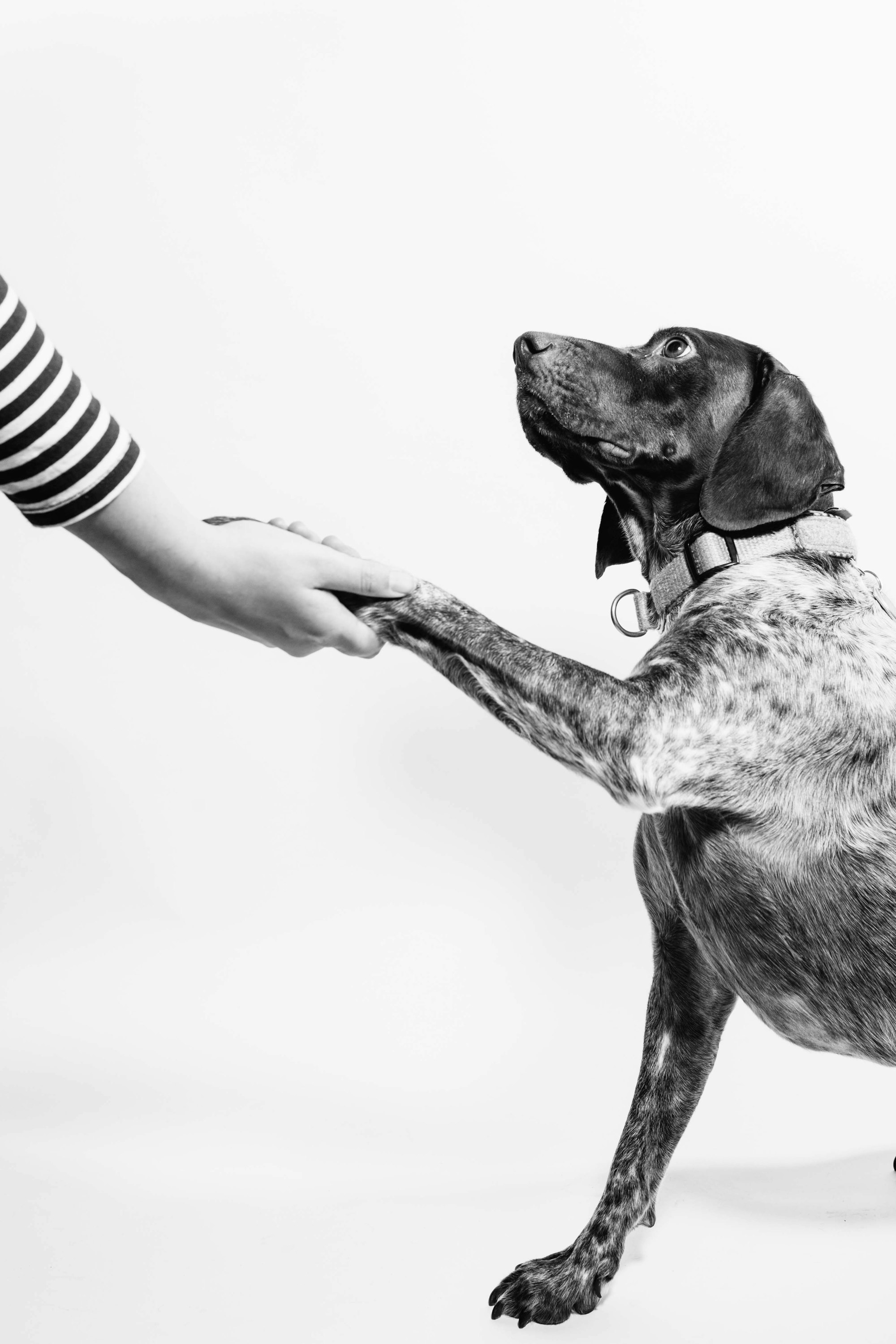As a dog owner, it can be alarming and concerning when your furry friend starts making weird noises that resemble choking. While it may seem distressing, there are several reasons why dogs make such sounds, and understanding these causes can help you address the issue appropriately.
In this comprehensive guide, we will explore the reasons why my dog makes weird noises like choking and provide solutions to address this issue. We will delve into the various causes behind these unusual sounds, such as reverse sneezing, upper respiratory infections, collapsing trachea, foreign objects, allergies and asthma, dental issues, and brachycephalic syndrome.
Reverse Sneezing: Understanding the Phenomenon
Reverse sneezing is a phenomenon commonly seen in dogs that can often be mistaken for choking. It is a sudden, rapid inhalation that is usually accompanied by strange, snorting-like sounds. While it may appear alarming, reverse sneezing is typically harmless and self-limiting.
Causes of Reverse Sneezing:
- Irritants and Allergies: Reverse sneezing can be triggered by irritants in the environment, such as dust, pollen, strong odors, or chemicals. Allergies to certain substances can also lead to reverse sneezing episodes.
- Excitement or Overstimulation: Dogs may experience reverse sneezing when they are overly excited, anxious, or during intense play sessions. The sudden change in their breathing pattern can trigger the reflex.
- Nasal Irritation or Inflammation: Irritation or inflammation in the nasal passages due to infections, foreign bodies, or respiratory conditions can cause dogs to reverse sneeze.
Distinguishing Reverse Sneezing from Choking:
It is important to differentiate between reverse sneezing and choking to provide the appropriate care. Here are some key differences:
- Sounds and Movements: Reverse sneezing is characterized by rapid, repetitive snorting-like sounds, while choking typically involves coughing, gagging, and attempts to clear the airway.
- Duration: Reverse sneezing episodes are usually brief and self-resolving, lasting only a few seconds to a minute. Choking episodes tend to persist longer and may require immediate intervention.
- Lack of Distress: Dogs experiencing reverse sneezing often show no signs of distress. They may continue with their normal activities or appear slightly confused but are generally unaffected. Choking, on the other hand, causes significant distress and discomfort.
Alleviating Reverse Sneezing Episodes:
Although reverse sneezing is generally harmless, you can help alleviate the episode and provide comfort to your dog. Here are some techniques:
- Calm and Soothe: Speak to your dog in a calm and reassuring tone to help them relax. Gentle petting and offering a comfortable and quiet environment can also be beneficial.
- Gently Massage the Throat: Lightly massaging the throat area or applying gentle pressure to the base of the neck can help interrupt the reverse sneezing reflex.
- Encourage Swallowing: Offer your dog a small amount of water or a treat to encourage swallowing, which can help alleviate the episode.
- Divert Attention: Distracting your dog with a favorite toy or engaging them in a different activity can help shift their focus and interrupt the reverse sneezing.
If your dog experiences frequent or prolonged reverse sneezing episodes, or if you have any concerns about their respiratory health, it is recommended to consult with a veterinarian for a proper evaluation and guidance.
Upper Respiratory Infections: Identifying the Symptoms

Upper respiratory infections can lead to dogs making choking-like noises. Here are the key points to identify the symptoms of respiratory infections in dogs:
- Coughing: Persistent or frequent coughing is a common symptom of upper respiratory infections. It may be dry or productive, with the presence of mucus or phlegm.
- Sneezing: Dogs with respiratory infections often exhibit frequent sneezing, which helps to expel irritants or infectious agents from the nasal passages.
- Nasal Discharge: An increase in nasal discharge is another indicator of an upper respiratory infection. The discharge may be clear and watery initially, but can progress to become thick and discolored.
- Congestion: Dogs may experience nasal congestion, causing them to breathe through their mouths or make snorting sounds.
- Fever: In some cases, dogs with respiratory infections may develop a fever. Monitoring their body temperature can help detect this symptom.
- Lethargy: Respiratory infections can make dogs feel lethargic and less active than usual. They may exhibit a decrease in appetite and overall energy levels.
- Eye and Ear Symptoms: In some instances, dogs with respiratory infections may also exhibit symptoms such as red and watery eyes, eye discharge, or ear infections.
If you notice any of these symptoms in your dog, it is important to seek veterinary attention. Upper respiratory infections in dogs can be caused by viruses, bacteria, or even fungal pathogens. Treatment options may include antibiotics, antiviral medications, supportive care, and rest.
Preventive measures such as regular vaccinations, maintaining good hygiene practices, avoiding exposure to infected animals, and keeping your dog's living environment clean can help reduce the risk of respiratory infections. Your veterinarian can provide guidance on preventive measures specific to your dog's needs.
Collapsing Trachea: Understanding the Condition
A collapsing trachea is a respiratory condition in dogs where the tracheal rings, which provide support to the windpipe, weaken and collapse, obstructing the airflow. Here's what you need to know about this condition:
- Breeds Prone to Collapsing Trachea: Small and toy breeds, such as Chihuahuas, Pomeranians, Yorkshire Terriers, and Pugs, are more susceptible to developing a collapsing trachea.
- Symptoms: Dogs with a collapsing trachea may experience episodes of honking or wheezing sounds that resemble choking. Other common symptoms include coughing (especially during excitement or exercise), difficulty breathing, rapid breathing, and exercise intolerance.
- Causes: The exact cause of tracheal collapse is not fully understood, but it is believed to be a combination of genetic predisposition and environmental factors. Chronic inflammation, irritants in the airways, obesity, and respiratory infections can contribute to the weakening of the tracheal rings.
- Diagnosis: Your veterinarian will perform a thorough physical examination, including listening to your dog's breathing and evaluating their medical history. Additional diagnostic tests such as X-rays, tracheoscopy, or fluoroscopy may be recommended to confirm the diagnosis and assess the severity of the condition.
- Management Strategies: While a collapsing trachea cannot be cured, various management strategies can help alleviate the symptoms and improve your dog's quality of life. These may include weight management, avoiding irritants such as smoke or strong fragrances, using harnesses instead of collars, utilizing humidifiers to keep the air moist, and administering medications like cough suppressants or bronchodilators as prescribed by your veterinarian.
It is essential to work closely with your veterinarian to develop a customized treatment plan for your dog based on their specific condition and needs. Regular check-ups and follow-up visits will help monitor the progression of the condition and make any necessary adjustments to the management plan.
Foreign Objects: Identifying and Addressing the Issue

Dogs are naturally curious creatures, and sometimes their curiosity leads them to swallow foreign objects that can cause choking. Here's what you need to know about identifying and addressing the issue of foreign objects:
- Signs of Choking: If your dog is choking on a foreign object, you may notice symptoms such as difficulty breathing, gagging, retching, pawing at the mouth, excessive drooling, coughing, or wheezing. It's essential to pay close attention to your dog's behavior and act promptly if you suspect choking.
- Potential Risks: Foreign objects can become lodged in your dog's airway, blocking the passage of air and causing a choking hazard. In some cases, these objects can also lead to more severe complications, such as respiratory distress, lung damage, or infection. It is crucial to address the issue as soon as possible to minimize the risk to your dog's health.
- Steps to Take: If you suspect your dog has swallowed a foreign object or is choking, it is important to remain calm and take immediate action. Assess the situation to determine if your dog can dislodge the object on their own or if intervention is required. If your dog is still able to breathe and cough, encourage them to continue coughing to try to expel the object. However, if your dog is unable to breathe or the object is lodged and causing distress, it is vital to seek veterinary care immediately.
- Veterinary Care: A veterinarian will have the necessary tools and expertise to safely remove the foreign object and ensure your dog's well-being. Do not attempt to remove the object yourself, as you may inadvertently cause further harm. Your veterinarian may perform a physical examination, use imaging techniques like X-rays, or perform endoscopy to locate and remove the foreign object. They may also provide supportive care, such as oxygen therapy or medications, to aid in the recovery process.
Remember, prevention is key when it comes to foreign object ingestion. Keep small objects, household chemicals, and hazardous materials out of your dog's reach. Supervise your dog during playtime and be mindful of what they have access to. Regularly inspect your home and yard for potential hazards to ensure your dog's safety.
If you suspect that your dog has swallowed a foreign object or is choking, do not hesitate to contact your veterinarian immediately. Prompt veterinary care can prevent further complications and ensure your dog receives the necessary treatment for a swift recovery.
Allergies and Asthma: Managing Respiratory Conditions

Allergies and asthma can have a significant impact on a dog's respiratory health, leading to breathing difficulties and unusual noises resembling choking. Understanding the relationship between allergies, asthma, and these symptoms is crucial for effective management. Here are some key points to consider:
- Allergens: Dogs can be allergic to various substances, including pollen, dust mites, mold, certain foods, and even certain medications. These allergens can trigger an allergic reaction in the respiratory system, causing inflammation and narrowing of the airways.
- Symptoms: Dogs with allergies or asthma may exhibit symptoms such as coughing, wheezing, difficulty breathing, and, in some cases, choking-like sounds. These symptoms may occur sporadically or persistently, depending on the severity of the condition and the exposure to allergens.
- Triggers: Identifying and minimizing exposure to common triggers can help manage allergies and asthma in dogs. This may involve avoiding specific environmental allergens, using hypoallergenic bedding, and providing a balanced diet that avoids known food allergens.
- Veterinary Care: If you suspect your dog has allergies or asthma, it is important to consult with a veterinarian. They can conduct diagnostic tests, such as skin or blood tests, to determine the specific allergens affecting your dog. Based on the diagnosis, they can recommend appropriate treatment options.
- Treatment Options: Treatment for allergies and asthma in dogs may involve medication, such as antihistamines or bronchodilators, to alleviate symptoms and manage inflammation. In some cases, immunotherapy or allergy shots may be prescribed to desensitize the dog's immune system to specific allergens.
- Environmental Management: Creating an allergen-free environment for your dog can also help manage respiratory conditions. This may involve regular cleaning, minimizing exposure to potential triggers, and ensuring good air quality in the home.
By understanding the relationship between allergies, asthma, and the choking-like sounds in dogs, pet owners can take proactive steps to manage these respiratory conditions and improve their dog's quality of life. Regular veterinary check-ups, proper medication, and environmental management are essential components of effective treatment.
Dental Issues: Oral Health and Breathing
Maintaining good dental health is not only essential for a dog's overall well-being but also plays a role in their respiratory health. Here are some key points to consider regarding dental issues and breathing difficulties in dogs:
- Oral Health and Respiratory Problems: Poor dental hygiene can contribute to respiratory problems in dogs. When dental issues such as gum disease, tooth decay, or infections are left untreated, bacteria can spread to the respiratory system, leading to inflammation and breathing difficulties.
- Choking-like Sounds: Dental problems can cause dogs to make choking-like sounds due to discomfort, inflammation, or the presence of foreign objects in the oral cavity. These sounds may occur during eating or even at rest.
- Common Dental Issues: Dogs can experience a range of dental problems, including periodontal disease, tooth fractures, abscesses, and oral tumors. These conditions can not only impact a dog's ability to eat and chew properly but also affect their respiratory health.
- Importance of Dental Care: Regular dental care is crucial for maintaining good oral health in dogs. This includes daily toothbrushing with dog-friendly toothpaste, regular dental check-ups, professional cleanings, and providing appropriate dental chew toys or treats.
- Preventive Measures: Along with proper dental care, preventive measures can help promote good oral hygiene and reduce the risk of respiratory problems. These may include a healthy and balanced diet, avoiding hard or abrasive toys that can cause dental damage, and regular monitoring of the dog's oral health.
- Veterinary Check-ups: It is important to schedule regular veterinary check-ups to assess the dog's oral health and address any potential dental issues promptly. The veterinarian can perform dental examinations, recommend necessary treatments, and provide guidance on home dental care.
By prioritizing dental health and implementing preventive measures, dog owners can help prevent dental issues that could contribute to respiratory problems and choking-like sounds. Regular dental care and veterinary check-ups are essential for maintaining optimal oral health and promoting healthy breathing in dogs.
Brachycephalic Syndrome: A Concern for Certain Breeds

Brachycephalic syndrome is a concern primarily seen in brachycephalic breeds, which are characterized by their flat faces and short muzzles. Here are some important points to understand about this syndrome and its impact on a dog's respiratory system:
- Definition of Brachycephalic Syndrome: Brachycephalic syndrome refers to a collection of anatomical abnormalities that affect a dog's upper airway, making it difficult for them to breathe normally. These abnormalities can include stenotic nares (narrowed nostrils), elongated soft palate, hypoplastic trachea (narrowed windpipe), and everted laryngeal saccules (protruding tissues near the vocal cords).
- Breeds Prone to Brachycephalic Syndrome: Brachycephalic breeds such as Bulldogs, Pugs, French Bulldogs, and Boston Terriers are more susceptible to developing this syndrome due to their unique skull and facial structure.
- Impact on Breathing: The anatomical abnormalities associated with brachycephalic syndrome can lead to airway obstruction, resulting in difficulty breathing. Dogs with this syndrome may exhibit snorting, snoring, wheezing, and labored breathing. They may also experience exercise intolerance and overheating.
- Health Risks and Complications: Brachycephalic syndrome can pose serious health risks for affected dogs. The compromised airflow and increased respiratory effort can lead to heatstroke, collapsed larynx, aspiration pneumonia, and other respiratory complications.
- Management and Treatment: The management of brachycephalic syndrome focuses on improving the dog's breathing and overall quality of life. Treatment options may include surgical interventions to correct anatomical abnormalities, weight management, environmental modifications, and avoiding situations that can exacerbate respiratory distress.
- Veterinary Care and Monitoring: Regular veterinary check-ups are crucial for brachycephalic breeds to monitor their respiratory health and address any concerns promptly. Veterinarians may recommend diagnostic tests, provide guidance on managing the syndrome, and offer advice on appropriate exercise and lifestyle modifications.
By understanding brachycephalic syndrome and its impact on respiratory health, dog owners can take proactive steps to manage the condition and provide their brachycephalic pets with a comfortable and healthy life. Regular veterinary care, early intervention, and lifestyle adjustments can greatly improve the well-being of dogs affected by this syndrome.
Conclusion:
Understanding why your dog makes weird noises like choking is crucial for ensuring their well-being. By identifying the underlying causes and implementing appropriate solutions, you can help your furry friend breathe comfortably and reduce any associated discomfort. Remember, if you have concerns about your dog's respiratory health, it is always recommended to consult with a veterinarian for a proper diagnosis and treatment plan. With the right care and attention, you can provide your dog with a happy and healthy life free from choking-like sounds.






